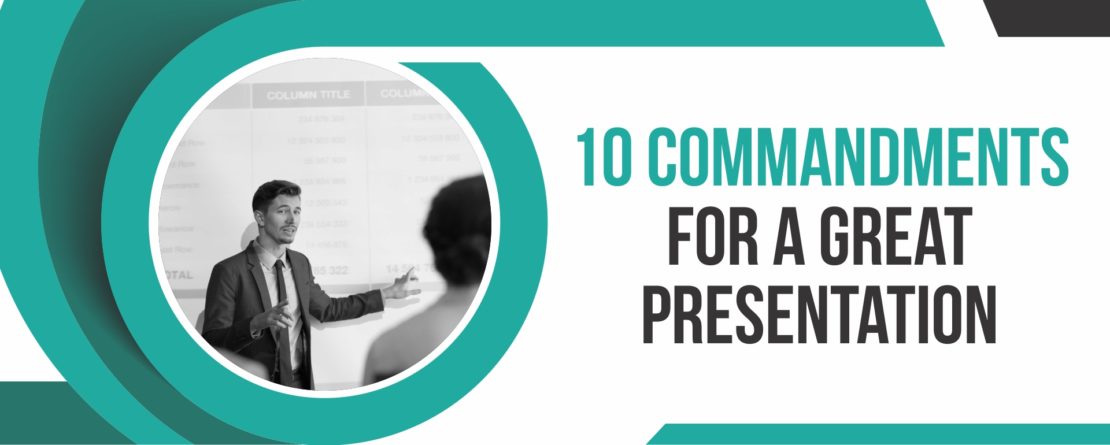10 Commandments for a Great Presentation
The ability to present an idea, strategy or even update the status of a project is critical to personal and professional success. Many a powerful idea hasn’t seen the light of day not because there is something inherently wrong with the idea but entirely because of the inability to communicate the same the right way.
The fact is we are presenting all the time be it to the board, to a supervisor, a customer or to an external stakeholder, the list is endless and we are constantly assessed on each of these presentations. These presentations are also an opportunity and it is imperative that we make these opportunities count by presenting well.
Presenting well isn’t a skill that one is born with, In fact, it is an art that one learns and once learnt you will be able to impress, impact and influence. Here are 10 commandments to make a great presentation.
1. What is your why
While constructing the content you need to personally answer the question “What is the one thing I want my audience to know?” The response to this question should not be a paragraph or an essay but you should be able to articulate your “why” in a couple of sentences at the most. What is the one thing I want my audience to know about my company, product, service or idea? When you are clear about the purpose or the why of the presentation almost always it makes it easier for your audience to process the information.
2. Know your audience
A presentation is like a movie, movies don’t just tell a story but they create an experience. So, it should be with your presentation. To create an experience it is mandatory that you know your audience. Some of the factors that you should be aware of your audience could include the following:
- What’s the average age of your audience? This would be crucial for examples that could be used.
- Is there an important person or a handful of people you may want to focus a little more attention to while presenting?
- What country, geography or industry do your audience come from? Remember people connect when you speak about what’s close to their heart.
- Do more than 50% of the people know you? Then you could share relevant personal stories.
- Are there any cross-cultural differences that you must be aware of from an audience perspective?
- Knowledge of topic – What does your audience know? This will help you to moderate your presentation accordingly.
3. Make the connection
Connect Emotionally
Name a movie that you really liked? For me, it was the Pursuit of Happiness.
The reason, it connected with my emotions was that I could feel the pain, the desperation, the frustration and the triumph of the protagonist. It’s a movie which more than just remembering the story line I remember the emotions. So it should be with communication and presentations. Why is an emotional connect with the audience important? It builds rapport, creates credibility and helps to get a buy-in from the audience.
Stories are a great way to make the emotional connect. Especially when the story is about yourself, your experiences and your learnings.
Why do stories work?
- They help to break down walls
- Stories help to seed ideas and emotions in the minds of the listeners
- The fact is we all love stories
- They help you make the point and accelerate learning
You connect when your passion is visible
What is passion? A strong emotion arising out of a sense of belief or conviction. Passion works because it is contagious. You cannot inspire others if you aren’t inspired your self. Never forget “The cause always matters! The cause that you are passionate about engages the audience more than the slides that you present. Passion gets the audience to concentrate – The easiest way to get the audience to tune off is by showing up and delivering a dull and uninspiring speech. On the other hand, passion can transform an average script into a great experience.
4. Have a conversation
The fact is great conversations always make great presentations, never forget this fact. Look at some of the great communicators of our time. You will notice that it always seemed like they were conversing rather than presenting.
So what happens in a conversation?
There is warmth, a comfortable body language, a relaxed ambience, nerves don’t get the better of those involved, there is no urgency to complete the communication and a feeling of trust and confidence covers the conversation.
These are some of the key elements that you need to be mindful of when you present.
- Maintain eye contact – When you make eye contact you connect.
- Relaxed body language – Don’t be too stiff or at the same time don’t come across being too chilled out.
- The rate at which you speak – Don’t lose the audience by speaking too fast or don’t end up putting them to sleep by speaking too slow.
- Engage your audience – Employ analogies, parables, humour and emotion.
- Be authentic – What you speak should be credible.
5. Structure matters
25% of your time ideally should be invested to set up the “why” of your presentation. Why is this presentation important and what is the purpose of it?
What can the audience expect? What do you expect from the audience as they listen/participate in the presentation? What were your thoughts before you discovered your idea? What was your perception before you analysed the data? This phase is the launch stage of your presentation.
50% of your time should be invested in the meat or the crux of the presentation.This is where you present the facts, data and hypotheses and where you interpret the facts, data and hypotheses.You present possible alternate views to the facts, data and hypotheses, validate merits and demerits of each. Lead the audience to your idea, insight or outcome. This is the heart of your presentation.
25% of the balance time should be invested in establishing your idea or insight. Now that you have led your audience through a factual journey and established the credibilityof your concept it is time to lead your audience in understanding how your ideas could benefit them or how they should embrace the idea. What are the merits of putting the idea to work and demerits if the hypothesis isn’t employed? This part is termed as the “Call to action stage “
The difference between an extraordinary and an ordinary presentation is the adherence to a structure.
6. Don’t read your slides your audience can do that that
Many presenters make the mistake of reading line by line word for word of the slide. Some turn around toward the screen, as a result, their back facing the audience while they read. This causes you to instantly lose the mindshare of the audience. When this happens the audience read from the screen directly and form their own opinions and the presenter is just incidental. It is critical to rehearse your lines.
Note cards, mobile or tablets are aids for you to occasionally refer to while you present. Presentations are conversations and not reading session.
7. Humour is your ally
The brain loves new, interesting and intriguing information but the brain also loves humour. When you combine them you’ve got the recipe for a magical presentation.
Why humour works?
- Humour lowers defences, making your audience more receptive to your message.
- It also makes you seem more likeable which makes people more willing to do business with or support someone they like.
- Laughter actually helps you to capture the attention of others.
- Humour used skilfully reduces hostility it deflects criticism, relieves tension, improves morale and helps to communicate a difficult message
However, it’s important to incorporate humour appropriately. The “Do not” list of humour include tired jokes, sexist jokes or racist jokes.
8. Your body language is either your best friend or your worst enemy
Body language makes a world of difference, it helps identify the difference between truth and deception. The fact is, research tells us that the audience first tunes into your body language before they tune into your message.
Here are few tips for a positive body language
- Have an air of confidence – Take care to dress appropriately and to look your best, shoes polished and clothes pressed.
- Make and maintain eye contact.
- Use open gestures – Palms up or open hands, circular movements. Ensure to pull your hands out your pocket. Gestures need to be natural and not exaggerated.
- Rehearse Rehearse Rehearse
- Smile
It’s normal to be nervous but you don’t have to show it.
9. Avoid the analysis paralysis
Don’t just state opinions ensure that your statements are backed with data and similarly don’t just orphan your data ensure it is backed with interpretation. Data by itself isn’t going to solve a problem, what is important is to make sense of the data and critically draw up action steps.
When presenting data it is your responsibility to lead the audience to interpretation and practical application. Make data fun by using relevant software to not just present a dull set of numbers but instead to tell a story. Yes, it’s possible.
10. Finish on a high
It’s important to finish off on a high. Here are few approaches you can use
- End with a call to action – “Now that we have understood the facts it’s important for us to do the following…”
- Summarise the takeaways, restrict it to not more than three
- A story will work well
- Conclude with humour walk off the stage leaving them laughing
- Inspire them with a quote or an anecdote.
If you put these presentation techniques to work you will deliver a box office hit of a presentation every time.
Rajiv Chelladurai, is the Managing Partner at ERGOS MIND Pvt Ltd. He is an author of couple of books the latest being Wisdom Workout. Rajiv is also a sought-after speaker. Ergos Mind is an organisation specializing in transformation that focuses on an individual’s internal change to bring about external organisational impact.
Masterclass Presentations is an Ergos Mind workshop that aims to help attendees present and communicate their presentations in a way that will Impress, Impact and Influence. It’s a workshop that is designed to help employees grow professionally which will, in turn, result in organisational growth. If you would like to know more about Masterclass Presentations or how it can be conducted in your organisation write to us info@ergosmind.com or call +91 95944 19988. To know more watch this video.





Recent Comments